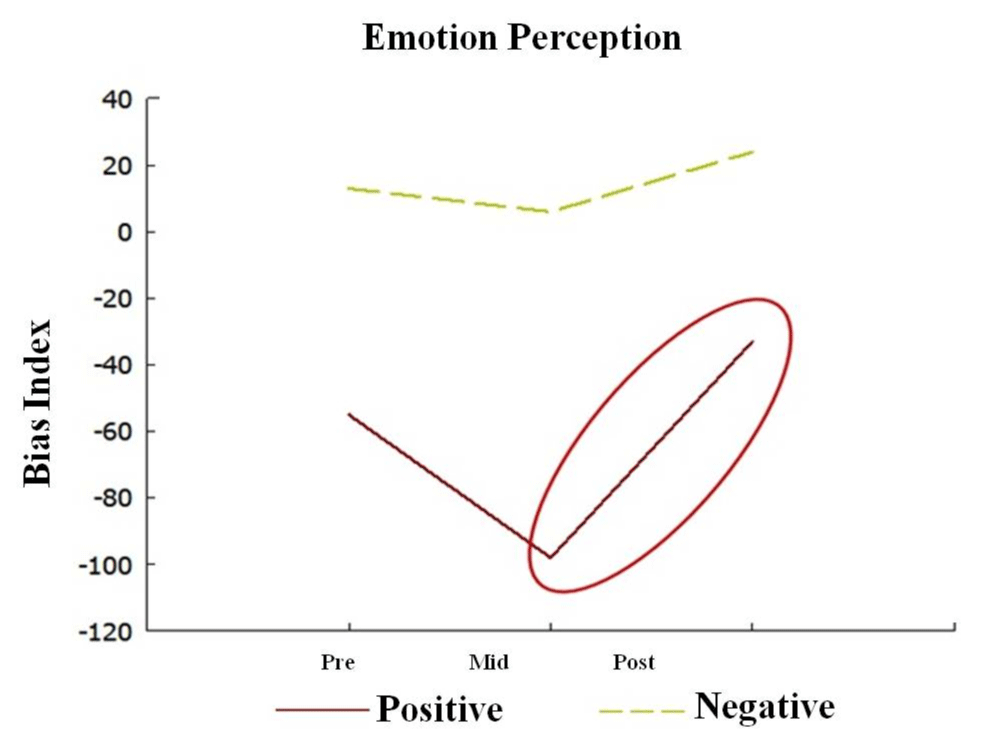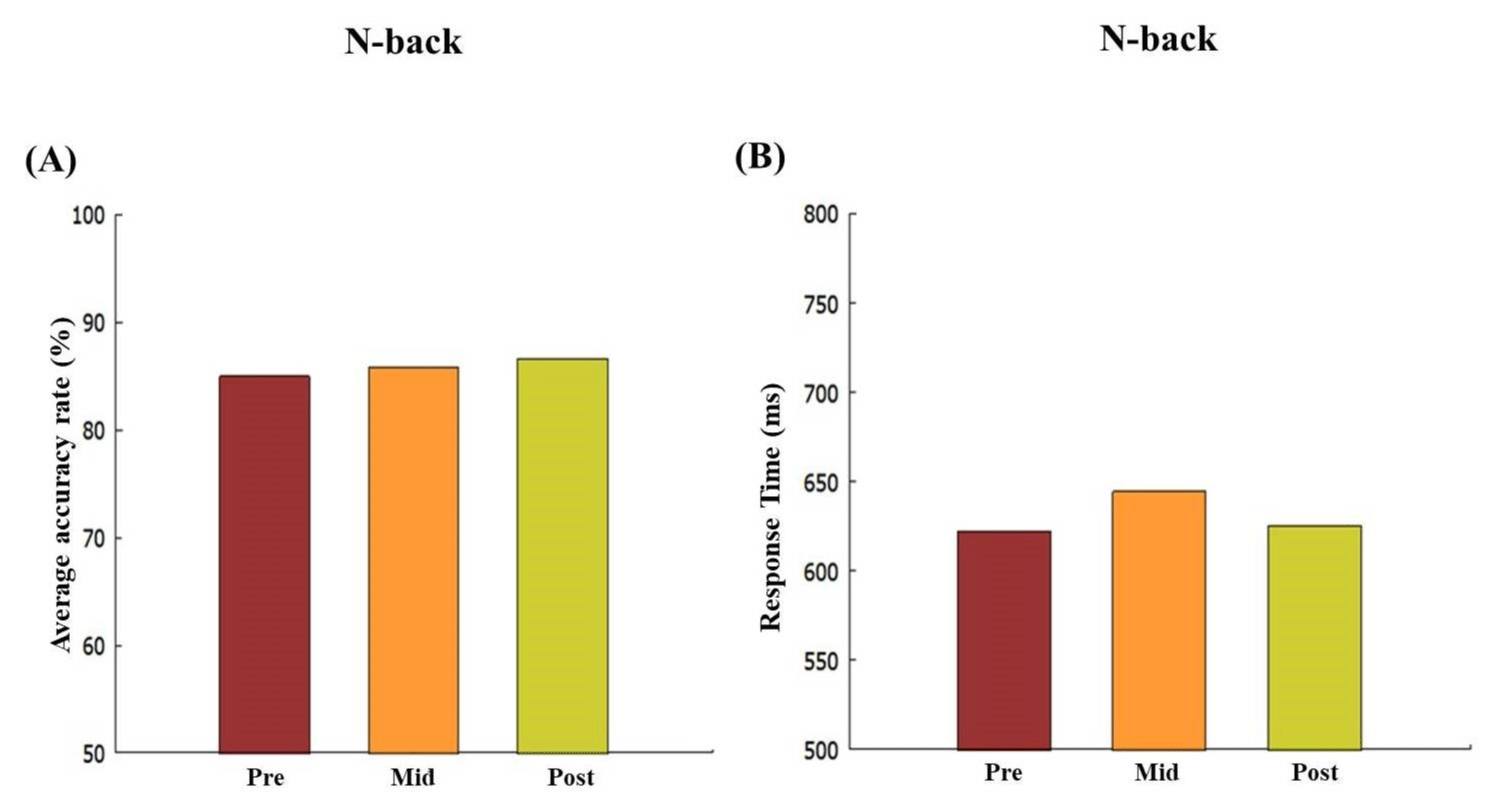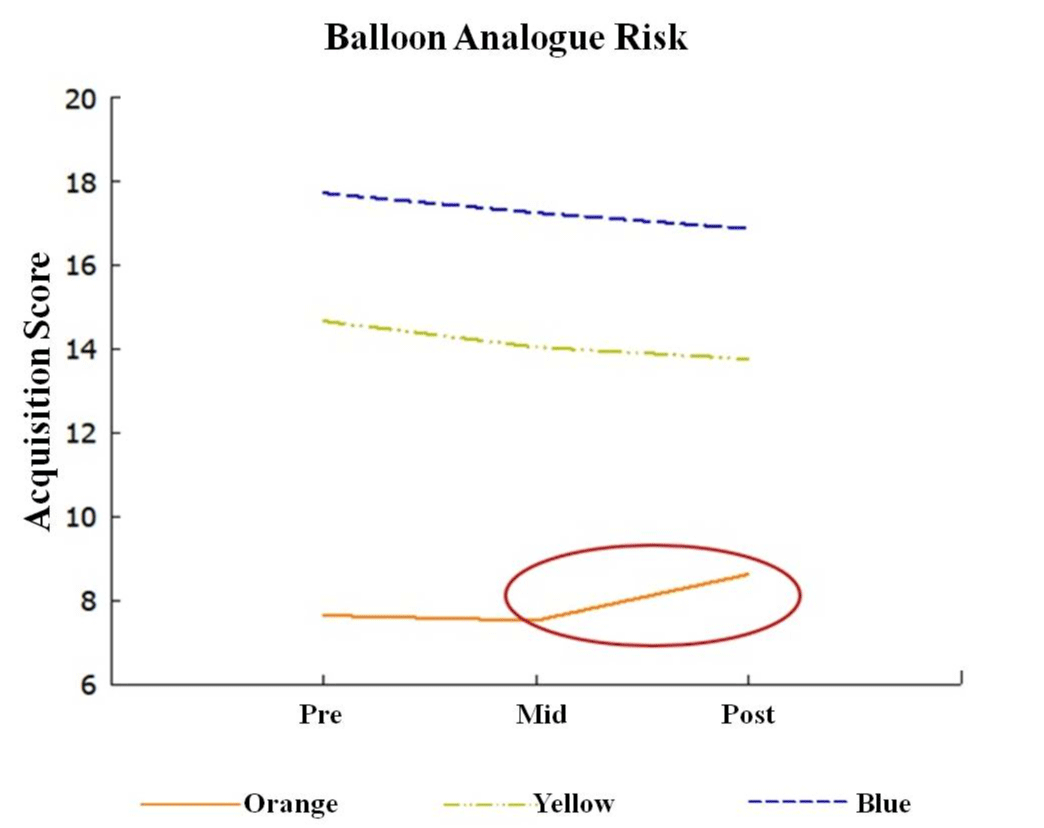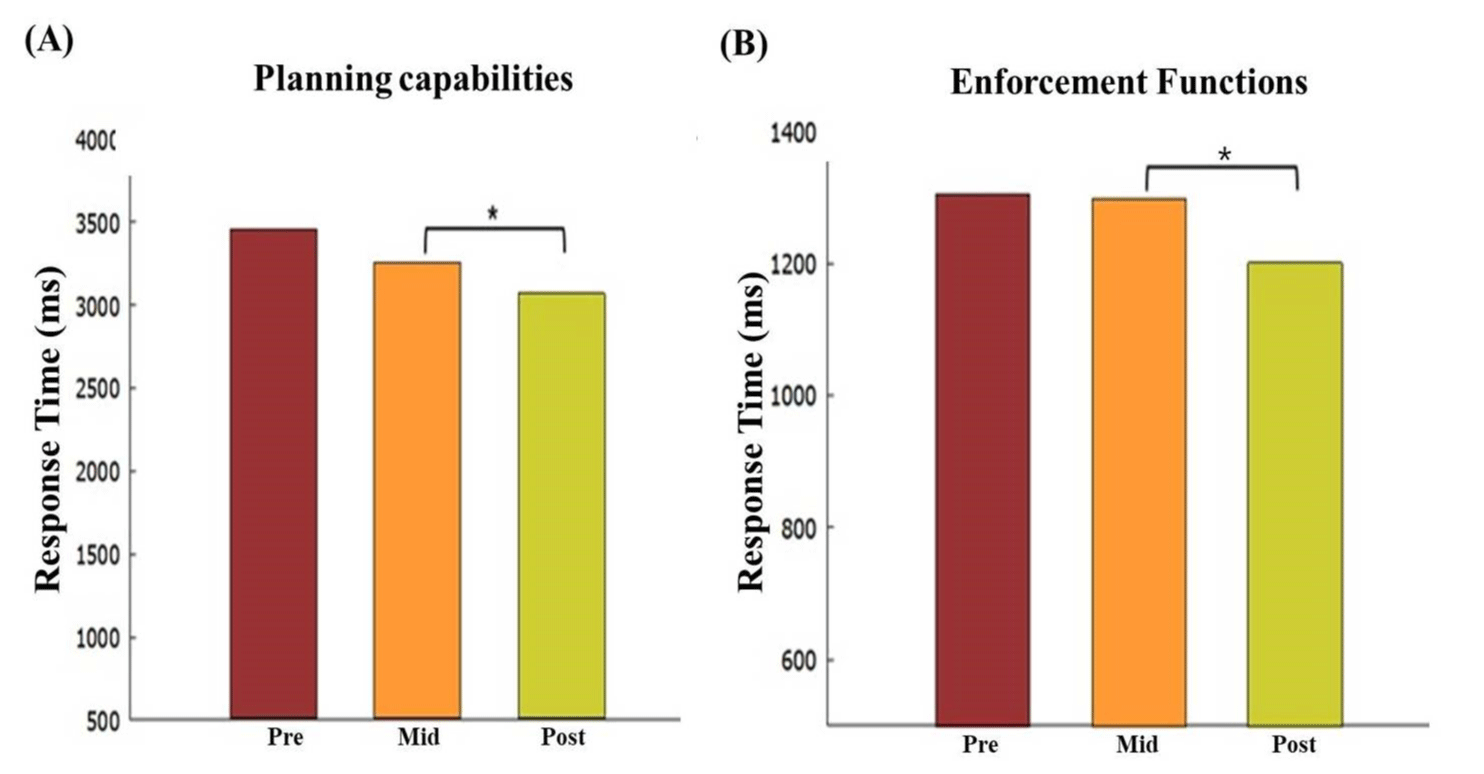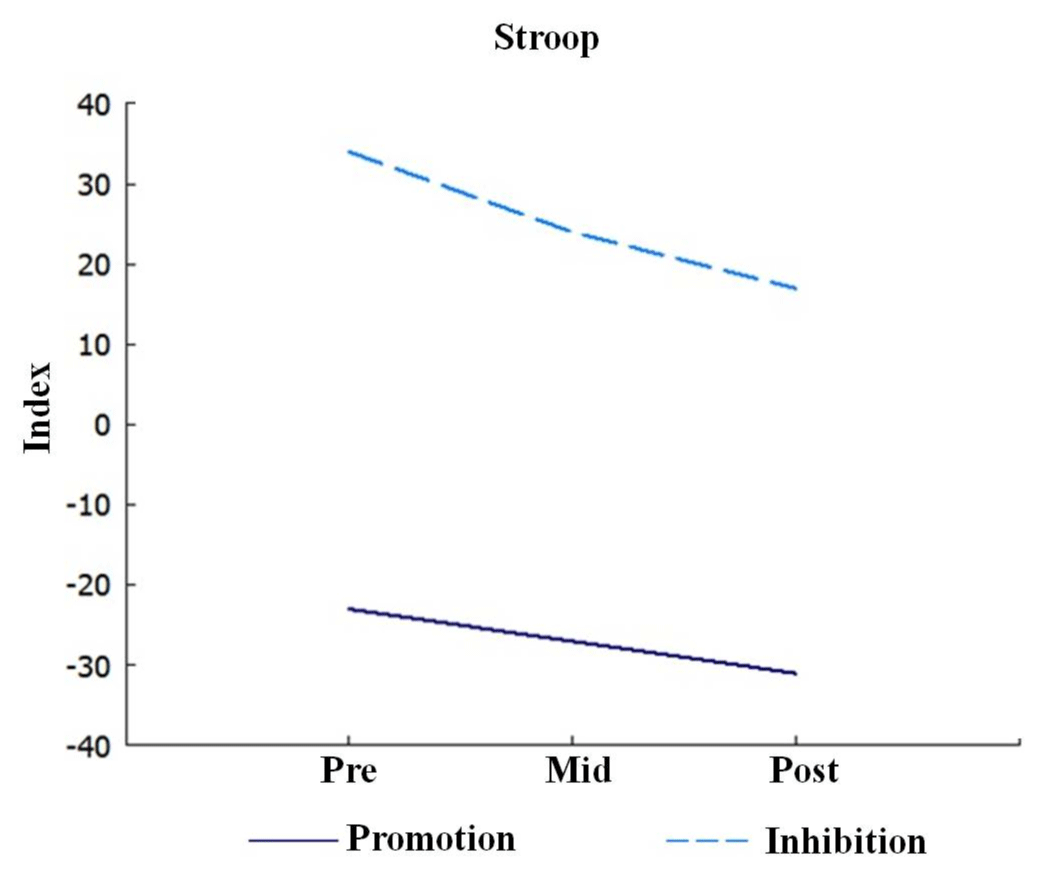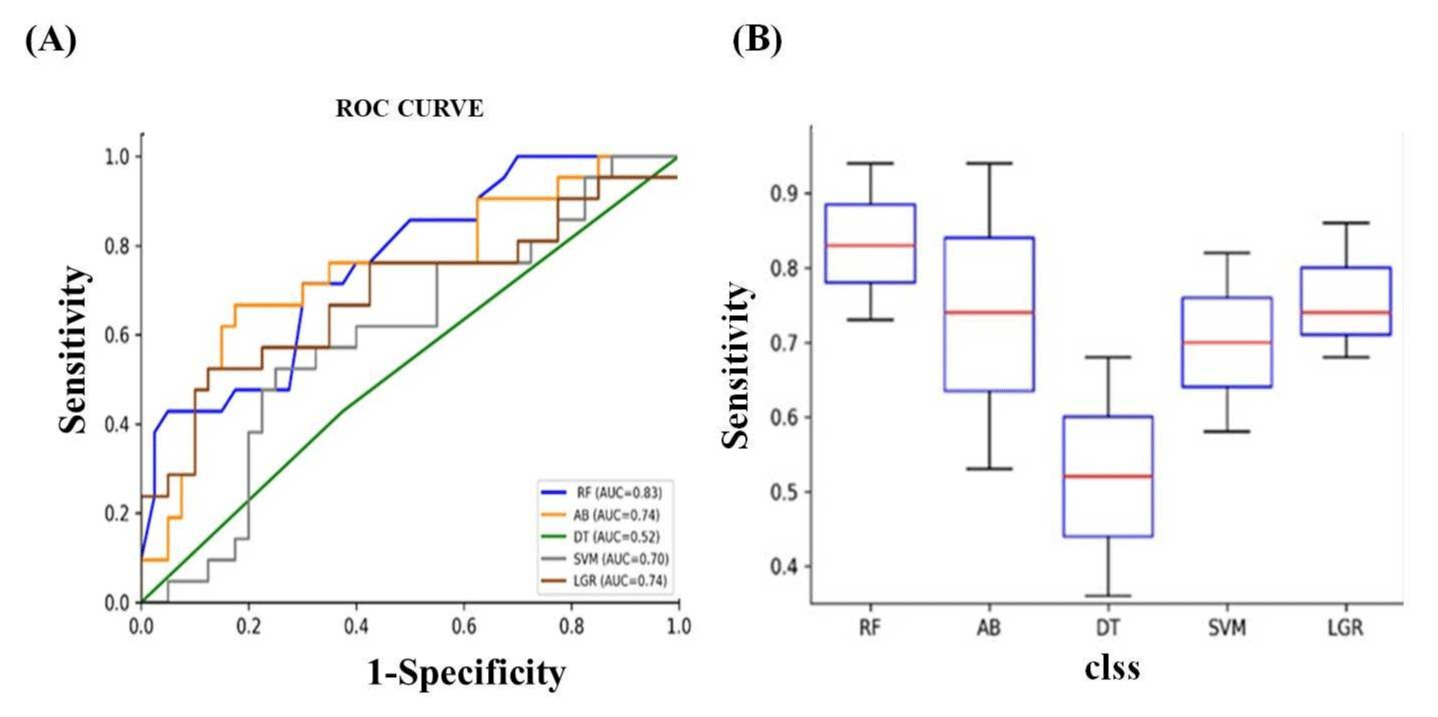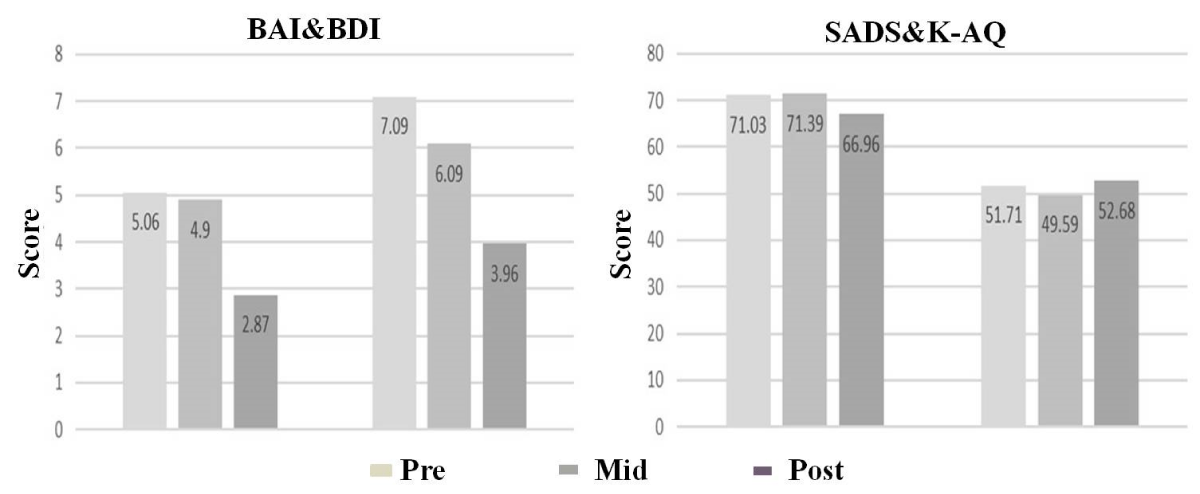More Information
Submitted: February 24, 2023 | Approved: March 10, 2023 | Published: March 11, 2023
How to cite this article: Jung JB, Cho YW, Kim SY, Chung SY, Han KH, et al. The effects of hemp seed consumption on depression, anxiety and cognitive improvement based on machine learning. Arch Food Nutr Sci. 2023; 7: 032-039.
DOI: 10.29328/journal.afns.1001047
Copyright License: © 2023 Jung JB, et al. This is an open access article distributed under the Creative Commons Attribution License, which permits unrestricted use, distribution, and reproduction in any medium, provided the original work is properly cited.
Keywords: Hemp seed; Depression; Anxiety; Cognition; Artificial intelligence
Abbreviations: AI: Artificial Intelligence; BAT: Burnout Assessment Tool; BART: Balloon Analogue Risk Task; BDI: Beck Depression Inventory; CBD: Cannbidiol; FT: Finger Tapping; PSS: Perceived Stress Scale; PHQ: Patient Health Questionnaire; TOL: Tower of London task
The effects of hemp seed consumption on depression, anxiety and cognitive improvement based on machine learning
Jea-Bum Jung1, Yong-Won Cho2,3, Sang-Yub Kim1, Soo-Yeon Chung4, Kyung-Hoon Han4, Byung-Joo Ham4,5 and Sung-Hee Han4,6*
1Wisdom Science Lab, Korea University, Seoul 02841, Korea
2Department of Radiology, Korea University Anam Hospital, Seoul 02841, Korea
3AI Center, Korea University Anam Hospital, Seoul 02841, Korea
4Institute of Human Behavior & Genetics, Korea University, Seoul 02841, Korea
5Department of Psychiatry, Korea University Anam Hospital, Seoul 02841, Korea
6AI-based Drug Discovery Center, Korea University Anam Hospital, Seoul 02841, Korea
*Address for Correspondence: Sung-Hee Han, AI-based Drug Discovery Center, Korea University Anam Hospital, Seoul 02841, Korea, Email: [email protected]
Background: Hemp seed (Cannabis sativa L.) is an annual herbaceous plant of the Cannabis genus that contains a large amount of protein, iron, and fatty acids, including linoleic, α-linolenic, and γ-linolenic acid. These compounds are involved in a number of biological activities, including immunity enhancement, hyperlipidemia, and inflammation reduction. Here, we investigated the antioxidant effects of hemp seed on human cognitive function.
Methods: The test was administered to 34 healthy volunteers aged ≥ 20 years. Participants were selected according to age and sex and were administered 10 g of hemp seed three times daily (30 g/day) for 45 days. The outcome measurements were recorded using a survey, computerized neurocognitive tests, and artificial intelligence.
Results: Survey analysis determined that both the Beck Anxiety Inventory and Beck Depression Inventory measurements decreased significantly after hemp seed consumption when compared to measurements taken before consumption (p < 0.05). Additionally, significant results were observed in the Stroop and Tower of London tasks (p < 0.05). The prediction performance for the antidepressant effect was 0.83 for the area under the curve in the random forest algorithm, which was superior to that of other machine learning methods.
Conclusion: These results suggest that hemp seeds have a beneficial effect on cognitive impairment.
Hemp seeds are extensively used worldwide as a source of food and dietary supplements, with cannabidiol (CBD) nutritional supplements accounting for approximately one-third of the global 1.34-billion-dollar market for CBD [1-3]. They are rich in non-psychoactive yet biologically active cannabinoids, including cannabidiol (CBD), which exert potent anxiolytic, spasmolytic, and anticonvulsant effects, among others [4-8]. In addition to their potential as anxiolytic anticonvulsant drugs, hemp seeds are palatable and provide a valuable source of essential amino acids, fatty acids, minerals, vitamins, and fiber [9]. In particular, the hemp seed oil is composed of > 90% polyunsaturated fatty acids, which are known to have beneficial effects against cardiovascular diseases, cancer, and inflammatory conditions [10]. Not only do hemp seeds provide beneficial nutritional value but also cannabinoids present in these seeds interact with two G protein-coupled cannabinoid receptors (CB1 and CB2) and two endogenous ligands (anandamide and 2-arachidonoylglycerol) of the endocannabinoid system [11]. The endocannabinoid system is physiologically involved in the regulation of appetite, pain, mood, memory, inflammation, insulin sensitivity, and fat and energy metabolism and is involved in a wide variety of potential therapeutic implications for the treatment of pain, neuropsychiatric disorders, and neurological diseases, which may benefit from CB1 activation or antagonism [12].
The potential anti-anxiety effects of CBD have also been shown in preclinical models. In mice subjected to chronic unpredictable stress for 2 weeks, regular administration of CBD at doses of 30 mg/kg had potential anti-anxiety effects through CB1 cannabinoid receptors, evidence of which presented as high hippocampal anandamide levels associated with CB1-cell receptor activation [13]. Depression is one of the most common mental illnesses and causes severe difficulties and disabilities that affect the thoughts, emotions, behaviors, physical functions, and overall quality of life of those afflicted. Recently, the global prevalence of depression has increased due to the coronavirus pandemic, as well as other environmental and social stresses [14].
In Korea, reports suggest that the incidence of depression increases by 20% every year. The main causes of depression are imbalances and defects in monoamine-based neurotransmitters such as dopamine, serotonin, and norepinephrine [15]. The control of dopamine levels in the prefrontal cortex of patients suffering from depression involves the use of pharmacological treatments and natural substances. The prefrontal cortex is regulated by the neurotransmission of catecholamines and incorporates cognitive and emotional information. The upward adjustment of dopamine receptor D1 by low dopamine concentrations in the prefrontal cortex is a notable factor in depression [16]. Dopamine metabolites and receptors have been reported to affect mood and motivation in both cerebrospinal fluid and brain regions [17].
Antidepressants work by blocking the reuptake of certain neurotransmitters (norepinephrine, serotonin, and dopamine) that are transferred between neurons via synapses. The main antidepressants used are monoamine oxidase inhibitors, which enhance the function of monoamine transporters and increase norepinephrine and serotonin levels. Recently, selective serotonin reuptake inhibitors, such as fluoxetine (Prozac), which selectively acts on serotonin systems, have been used as an alternative to gold-standard treatments [18]. However, these drugs have negative side effects, including sexual dysfunction, vomiting, diarrhea, constipation, gastrointestinal disorders, loss of appetite, dry mouth, anxiety, and insomnia [19]. Therefore, many researchers are looking for natural antidepressants to use as an alternative to conventional drugs in the treatment of depression.
Previous research has identified that hemp seeds have an antidepressant effect and can induce cognitive improvements and behavioral changes in vertebrates. Therefore, in this study, we investigated the effects of hemp seed consumption on antidepressant ability and cognitive improvements in the general population. Furthermore, the findings were based on artificial intelligence (AI) analysis of the correlation between hemp seed consumption and antidepressant ability and cognitive enhancement.
Participant selection
The participants selected for this study were those with normal or corrected vision, without brain damage or history of brain injury, without learning/linguistic problems, without claustrophobia who did not overwork/drink on or the day before the study, and who could participate in the experiment.
Inclusion criteria, exclusion criteria and recruitment method
The inclusion criteria for participants were as follows: right-handed, no history of mental illness, learning or speech impairment, normal or corrected vision, native speaker of Korean, good reading and writing skills in Korean, and able to use PCs and mobile devices.
The exclusion criteria for participants were as follows: those with vision problems, such as color blindness, coloration, and dry eye syndrome; subjects with physical constraints on their PC and mobile use; those with a history of mental illness and learning/language disabilities; and those with brain damage and a history of brain damage.
Recruitment of participants was outsourced to the Korea University community site, Gopas and external part-time job recruitment sites to enlist participants to volunteer in the survey and online research. Participants were contacted individually through the use of e-mail and mobile phone messages. In addition, an official letter was sent to the public agency responsible for the recruitment of participants to seek cooperation from the designated company or school and to recruit participants using public announcements, bulletin boards, etc. Later, we sent experimental portal (site) links to participate in surveys and online research through separate means, such as e-mail and mobile phone messages.
Calculating the number of participants required for study design
The number of participants included in this study was 31 adults aged 20–60 years, and online-based surveys and cognitive tasks were conducted for all. The rationale for the calculation is as follows: to measure the response time and error rate using cognitive tasks and to secure statistical reliability, 100 cognitive tasks (behavior) and questionnaires were randomly conducted for each experiment [20]. For the significance of the experiment, the effect size formula that affects the power (Co) with 0.05 significance and a minimum verification power of 80 bases is as follows:
δ = (μD — 0)/σ
(δ: effect size, μD: differences in a mean between experimental and control groups, σ: variance of means).
Simulation results based on the number of participants (including brainwave and brain imaging studies) require at least 20 experimental participants in one study to achieve statistically significant results [21]. This work compares pre-middle-post results with an in-subject design but assigns 25 people to each of the four groups, divided by age (20-39 years, 40-60 years) and gender (male and female), for post-validation. The reason for assigning 25 people is that, in addition to 20 for statistical stability, 25 people will be assigned to each group to conduct post-validation according to pre-middle-post result details (age, gender) to enhance verification.
Hemp seed administration
The pre-middle conditions of 1.5 months (45 days) from the start of the experiment were the control conditions, and the middle-post conditions of 1.5–3 months (45 days) were the experimental conditions. The values before and after each condition were compared with the within-design. There was no treatment under the control conditions, whereas, under the experimental conditions, the participants were required to take 10 g of hemp seed three times a day for 45 days (30 g/day).
Survey development
A survey was also conducted to compare the results with those of the CNT program. The questionnaire used was of four types: Perceived Stress Scale (PSS), Patient Health Questionnaire (PHQ; PHQ-9), Burnout Assessment Tool (BAT), and Beck Depression Inventory (BDI).
The PSS was developed by Cohen, et al. [22] and is a measure of how the surveyor generally perceives and interprets stress over the course of a month. Despite exposure to the same stressors, there can be a difference in the degree of stress experienced by individuals. Thus, the PSS can be considered appropriate for assessing the degree of stress an individual feels compared to other techniques that measure only objective stress situations. The Patient Health Questionnaire (PHQ) is a self-report test designed to screen for depression and evaluate its severity. In this study, we used the Korean version of the PHQ-9, which was translated and studied domestically by Han, et al. [23], to confirm its validity and reliability. It consists of a nine-symptom checklist that corresponds to the diagnostic criteria for DSM-IV major depression disorders and examines how often these problems were experienced over a 2-week period. The response was evaluated on a 4-point scale of “not at all”, “several days”, “more than half of the days”, and “nearly every day”, with scores ranging from 0 to 27. Sums of scores > 10 were considered as having a major depressive disorder [24].
Job burnout refers to a state of psychological exhaustion that occurs when exposed to long-term stressors and, thus, appears to be a failure to cope with psychological resources [25]. In this study, the Korean version of the BAT, which was developed by the Schaufeli Research Team [26], a developer of the Maslach Burnout Inventory and a leading researcher in the field of exhaustion, was used as the BAT (K-BAT). The BDI is a measure of depression that is currently used in clinical practice. It was developed by Beck [27] to measure the type and extent of depression based on clinical depression symptoms and is widely used worldwide.
CNT program (http://ntnnt.net/group/nnt)
In this study, the participants used six types of CNT programs: finger tapping (FT), emotional picture perception, n-back test, Balloon Analogue Risk Task (BART), Tower of London task (TOL), and Stroop.
First, in FT, two to eight cards with human facial expressions were displayed simultaneously and the facial expression on each card was either negative or positive. If the expressions on the cards were all the same, the participant was required to press a designated button; conversely, if the expressions on the cards were different from each other, the participant was required to press an alternative button. The inspection was conducted in this order of implementation after the performance of the task description and sufficient practice guidelines [28,29].
Second, in the emotion perception experiment, the study participants were simultaneously shown two to eight cards with human faces on them. The facial expressions on each card were either negative or positive. If the facial expressions on the presented cards were the same, the participant was required to press the “Same” button, whereas if the expressions were different, the “Different” button was pressed. The inspection was conducted in the order of this implementation after the task description and sufficient practice implementation [30-32].
Third, in the n-back test, the participants were presented with a sequence of characters on a screen one by one. If the current character was deemed to be the same as the previous character (one, two and three dictionaries), the space key on the keyboard was pressed before the character disappeared. The response time and noon rate were also recorded. The inspection was conducted in the order of this implementation after the task description and sufficient practice implementation [33].
Fourth, in the BART, the study participants sat in front of a computer monitor with balloon-shaped stimuli present on the screen, and participants were required to click the button below the balloon. Clicking the button caused the balloon to increase in size, and there were no restrictions on how many clicks the participants could use once the balloon reached a particular size, it burst and the feedback of “popped” alerted the participant that the balloon had burst. Before the balloon burst, the participants could press the “Stop” button on the left side of the screen to choose not to make the balloon larger. In this case, the participants would receive feedback informing them that money had accumulated as the balloon increased in size. Blue, red, and yellow balloons were in the fast-, medium-, and slow conditions, respectively, and the participants recognized this association as they went through the task [34].
Fifth, in the TOL, the study participants were required to use their computer mouse to move images of green, red, blue, and yellow discs placed in various sequences and locations to the same shape as the target image on the computer screen. The participants could only move one disk at a time and only select the top disk. The aim was to move the disk in a minimal number of steps. The inspection was conducted in the order of this implementation after the task description and sufficient practice [35,36].
Finally, in the Stroop task, a +-shaped starting point was presented in the center of the screen, and letters or numbers were presented up to three digits in length shortly after the starting point appears. The letters or numbers presented were, for example, 1 MM and ZZZ. The task is to enter the number, not the letters or numbers presented, and inspection was conducted in the order of this implementation after the task description and sufficient practice implementation [37,38].
AI analysis
Many of these features involve simple noise or a high correlation with each other, although various quantitative features can be extracted from hemp consumption for antidepressant datasets. Therefore, feature selection is important for building a prediction model with specific features. To minimize the computational cost, unselected features were not used in the prediction model. Among cognitive functionality features of hemp consumption, significant features for predicting antidepressant factors were selected with a random forest regressor using Python Software Foundation, version 3.6, with the Scikit-learn package (https://github.com/scikit-learn/scikit-learn). We analyzed five machine learning algorithms, namely, random forest, adaptive boosting, decision tree, linear support vector machine, and logistic regression, using Python 3.6, for a prediction model with significant factors of antidepressant functional bioactive compound features from hemp seed intake datasets. To train the five machine learning algorithms, 20 repeated 10-fold stratified cross-validations were applied to improve the stability of performance.
Statistical analysis
Data analysis was performed using SPSS software (Statistics Package for Social Science, Ver. 20.0). To analyze the difference in the averages of the samples, one-way ANOVA was conducted, and significant differences were determined by Duncan’s multiple range tests at the level of p < 0.05. In addition, five algorithms in independent datasets were compared using a machine learning model with Delong’s test [xx] using open-source R software (version 3.5.1; R Foundation for Statistical Computing, Vienna, Austria). Statistical significance was set at p < 0.05.
Analysis of survey
Analysis of the PSS/PHQ score showed no significant differences in the PSS and PHQ scores when hemp seed was consumed (data not shown). In contrast, the BAI score significantly changed depending on whether hemp seed was consumed [F(2, 62) = 8.007, p =.001], and post-hoc analysis revealed that the BDI score significantly decreased after hemp seed consumption [t (1, 32) = 2.930, p =.006] (Figure 1).
Figure 1: Pre: initial data, mid: data before hemp seed consumption, post: data after hemp seed consumption.
In addition, the BDI score significantly changed depending on whether hemp seed was consumed [F (2, 62) = 10.184, p =.001], and post-hoc analysis revealed that the BDI score was significantly reduced after hemp seed consumption [t (1, 32) = 3.237, p =.003] (Figure 1). The BAI and BDI values obtained for depression and anxiety levels decreased with hemp seed consumption, indicating that hemp seed consumption positively affects depression and anxiety. Hemp seed consumption is considered to play a role in alleviating depression and anxiety, which are critical psychological vital signs that are deeply related to an individual’s mental health status.
Analysis of CNT program
The results of the FT test showed no significant difference between the reaction time and tapping interval depending on hemp seed consumption. However, the interval between towels appeared to shorten with hemp seed consumption. These results are significant in demonstrating the improvement in motor function with hemp seed consumption (data not shown).
The emotion perception experiment showed that positive bias had a greater effect than negative bias [F (1,32) = 3.572, p = 0.068]. No significant difference was observed with hemp seed consumption. Although the emotion perception experiment did not show significant differences when hemp seed was consumed, further analysis is needed given that there was a trend towards positive bias in the data (Figure 2).
Figure 2: Diagram of changes in the emotion perception task of positive (purple) and negative (green) depending on hemp seed consumption. Pre: initial data, mid: data before hemp seed consumption, post: data after hemp seed consumption.
In addition, the results of the n-back test showed no significant difference in either the reaction time or the accuracy rate depending on hemp seed consumption (Figure 3).
Figure 3: Average accuracy rate (A) and response time (B) for the n-Back task. The accuracy rate is 1 means 100 points and the reaction time is measured in ms. Pre: initial data, mid: data before hemp seed consumption, post: data after hemp seed consumption.
These results are likely due to hemp seed consumption having little influence on the n-back task, which measures working memory.
The BART results showed no significant difference in the number of successful acquisitions of yellow balloons with moderate burst probabilities and blue balloons with low burst probabilities (Figure 4). However, the number of successful acquisitions of orange balloons, which had a low probability of bursting, did not differ between the pre- and middle-conditions, and the number in the post condition tended to increase. Two-way ANOVA revealed significant differences in balloon color. [F (1,33) = 262.060, p =.001]. It was observed that the data changed over time, so further studies will be necessary to analyze additional data.
Figure 4: The acquisition score chart for BART. Ranked according to score with or without the hemp seed consumption for each balloon color in the BART. Pre: initial data, mid: data before hemp seed consumption, post: data after hemp seed consumption. *The color of each line refers to the color of the balloon.
The TOL test results showed significant differences between hemp seed consumption and planning and execution capabilities [planning capabilities: F (2,66) = 4.185, p = 0.019; execution capabilities: F (2,66) = 4.136, p = 0.020] (Figure 5) This suggests that the cognitive ability to execute tasks and to formulate pre-execution plans improves with hemp seed consumption.
Figure 5: Planning capabilities (A) and enforcement functions (B) of the Tower of London project. The reaction time was measured in ms. The planning capability is the amount of time it takes to move the first disc, and the execution function calculates the amount of time it takes from moving the first disc to moving the last disc. Pre: initial data, mid: data before hemp seed consumption, post: data after hemp seed consumption.
The results of the Stroop task were highly significant [F (1,33) = 221.106, p =.001], and changes in the two scores were significant [F(2,66) = 3.244, p = 0.045]. The results showed that promotion and inhibition function was more positive after than before hemp seed consumption (Figure 6).
Figure 6: Changes in the promotion (purple) and inhibition (green) of the Stroop task depending on whether or not hemp seed is consumed. Pre: initial data, mid: data before hemp seed consumption, post: data after hemp seed consumption./p>
AI analysis
We selected features using each dataset and analyzed the diagnostic performance of the prediction model. Eleven features were selected using the random forest regressor model from the datasets, including n-back, TOL, BART, Stroop, FT, and emotion perception. The three most important features among those selected were n-back, TOL, and Stroop. In addition, we analyzed the antidepressant effects of hemp seed consumption by using five classifier models. Figure 1 and Table 1 show the receiver operating characteristic curve (ROC) curves, AUCs, and P-values for each model. Figure 7(b) shows a box plot comparing five machine learning methods for diagnostic performance, and Figure 7(a) is an ROC analysis using selected features for predicting the antidepressant task. Among the five methods with significant features from the datasets of hemp seed consumption and its features, random forest had the highest diagnostic performance for predicting antidepressant effect (AUC: 0.83) when using significant features, whereas the lowest diagnostic performance was a decision tree (AUC: 0.52). There was a significant difference between the AUC of the random forest and that of the two models (decision tree and linear support vector machine) (p < 0.05) (Table 1).
Figure 7: (A) The comparison of receiver operating characteristic curves of five models predicting depression relief effects. (B) Box and whisker plots illustrating diagnostic performances of five machine learning algorithms, using significant selected features acquired from the results of depression and cognitive function measurements after consuming hemp seed.
| Table 1 : AUCs of five machine learning models using significant features acquired from random forest regression analysis for antidepressant and increasing cognitive function through hemp seed consumption. | ||
| Machine learning models using significant features from the result of antidepressant and cognitive function dataset by hemp seed consumption | Prediction for antidepressant effect | |
| AUC | p - Value* | |
| Random forest | 0.83 (0.73, 0.94) | Reference |
| Adaptive boosting | 0.74 (0.53, 0.94) | 0.776 |
| Decision tree | 0.52 (0.36, 0.68) | 0.0002 |
| Linear support vector machine | 0.70 (0.58, 0.82) | 0.024 |
| Logistic regression | 0.74 (0.68, 0.86) | 0.327 |
| Note: Numbers in parentheses are 95% confidence intervals. *p - value was acquired from comparison with the reference standard using the Delong method. |
||
The Korean society is gradually becoming an aging society with an increasing rate of chronic diseases presenting in adulthood, such as memory deterioration, cognitive function decline, dementia, senile stress depression, arteriosclerosis, diabetes, and arthritis [39-43]. Therefore, self-medication is becoming increasingly important in maintaining a healthy lifestyle, and the selection of functional foods is one of the major efforts required to sustain it [44,45]. The health functional food market generated a global revenue of approximately US$ 143.2 billion by the end of 2019 and was projected to reach US$ 639.4 billion by 2020 [46].
The purpose of this study was to confirm the antioxidant effects of hemp seed as a functional food that affects psychological state and cognitive function [5,7,8]. With the outcome of AI analysis for the PSS/PHQ score, hemp seed consumption did not show any effect on the outwardly expressed psychological states, such as social phobia or aggression. However, both the BAI and BDI values were significantly reduced, suggesting that hemp seed consumption had a positive effect on depression and anxiety caused by the inward psychological state. This was observed among various individuals. In addition, there were observed changes in the statistical analysis of cognitive ability according to hemp seed consumption using six cognitive tests (balloon analog risk task, n-back task, emotion perception task, Stroop task, FT task, and TOL). In the case of emotional perception and FT, there were no significant differences based on hemp seed consumption; however, some positive improvement in motor function was observed, with a positive bias shown for depression measurement. In particular, the Stroop task and TOL data analysis showed a significant difference before and after hemp seed consumption. The Stroop task functions to identify facilitation and inhibition, which are two of the many cognitive functions of humans. Among the cognitive functions tested, the executive function of executing the task and the ability to establish a plan before execution were found to act faster. The Stroop task analysis showed that the change in score after hemp seed consumption was significant and confirmed that the functions of facilitation and inhibition in executive functions were further improved after hemp seed consumption. For the TOL task, an effect on planning ability and executive function was found after hemp seed consumption. This indicates that planning ability was faster and executive function was significantly faster after hemp seed consumption. In particular, this study demonstrated the potential ability of AI in predicting antidepressant effects. The selected features (n-back, TOL, BART, Stroop, FT, and emotion perception, using the random forest regressor) were important for developing this model. This strategy, based on machine learning, can be used as a biomarker in clinical practice.
This study has some limitations. First, the sample size was too small to generalize the model. In order to overcome the limited sample size, the development of machine learning algorithms is required. Second, the study population was limited to a single hospital. In the future, we intend to collect data from various patients to predict antidepressant effects and analyze improvements after hemp seed consumption. If datasets are collected from multiple sites, we will attempt to predict antidepressant effects using deep learning. Consequently, it could be predicted that hemp seed exerts a positive effect on cognitive ability based on the observed results and interpretation via statistical and AI analysis. It may also be desirable to utilize AI for analyzing or predicting significant relations in the early phase of study to consider further evaluation during execution.
Ethics approval and consent to participate
Participants signed a consent form befwore participating in the study. The study was approved by Korea University’s Institutional Review Board (KUIRB-2020-0137-01).
Funding
This research was supported by National Research Foundation of Korea (NRF) grant funded by the Korea government (MSIT) (No. NRF-2019R1A2C1007019).
Authors’ contributions
JB. J, YW. C, BJ. H and SH. H conceived and designed the study. SY. K, SY. C, and KH. H analyzed the data and wrote the original manuscript. YW. C performed the statistical analyses. SH. H reviewed and edited the manuscript. All authors have read and agreed to the published version of the manuscript.
This research was supported by the National Research Foundation of Korea (NRF) grant funded by the Korean government (MSIT) (No. NRF-2019R1A2C1007019).
- Vonapartis E, Aubin MP, Seguin P, Mustafa AF. Charron JB. Seed composition of ten industrial hemp cultivars approved for production in Canada. J Food Composit Anal. 2015; 39:8-12.
- Andre CM, Hausman JF, Guerriero G. Cannabis sativa: The Plant of the Thousand and One Molecules. Front Plant Sci. 2016 Feb 4;7:19. doi: 10.3389/fpls.2016.00019. PMID: 26870049; PMCID: PMC4740396.
- Cerino P, Buonerba C, Cannazza G, D'Auria J, Ottoni E, Fulgione A, Di Stasio A, Pierri B, Gallo A. A Review of Hemp as Food and Nutritional Supplement. Cannabis Cannabinoid Res. 2021 Feb 12;6(1):19-27. doi: 10.1089/can.2020.0001. PMID: 33614949; PMCID: PMC7891210.
- Mailleux P, Preud'homme X, Albala N, Vanderwinden JM, Vanderhaeghen JJ. delta-9-Tetrahydrocannabinol regulates gene expression of the growth factor pleiotrophin in the forebrain. Neurosci Lett. 1994 Jul 4;175(1-2):25-7. doi: 10.1016/0304-3940(94)91069-3. PMID: 7970205.
- Kozela E, Juknat A, Vogel Z. Modulation of Astrocyte Activity by Cannabidiol, a Nonpsychoactive Cannabinoid. Int J Mol Sci. 2017 Jul 31;18(8):1669. doi: 10.3390/ijms18081669. PMID: 28788104; PMCID: PMC5578059.
- Moreno-Sanz G. Can You Pass the Acid Test? Critical Review and Novel Therapeutic Perspectives of Δ9-Tetrahydrocannabinolic Acid A. Cannabis Cannabinoid Res. 2016 Jun 1;1(1):124-130. doi: 10.1089/can.2016.0008. PMID: 28861488; PMCID: PMC5549534.
- Mannucci C, Navarra M, Calapai F, Spagnolo EV, Busardò FP, Cas RD, Ippolito FM, Calapai G. Neurological Aspects of Medical Use of Cannabidiol. CNS Neurol Disord Drug Targets. 2017;16(5):541-553. doi: 10.2174/1871527316666170413114210. PMID: 28412918.
- Vilela LR, Lima IV, Kunsch ÉB, Pinto HPP, de Miranda AS, Vieira ÉLM, de Oliveira ACP, Moraes MFD, Teixeira AL, Moreira FA. Anticonvulsant effect of cannabidiol in the pentylenetetrazole model: Pharmacological mechanisms, electroencephalographic profile, and brain cytokine levels. Epilepsy Behav. 2017 Oct;75:29-35. doi: 10.1016/j.yebeh.2017.07.014. Epub 2017 Aug 16. PMID: 28821005.
- Callaway JC. Hempseed as a nutritional resource: An overview. Euphytica. 2004; 140:65-72.
- Lesma G, Consonni R, Gambaro V, Remuzzi C, Roda G, Silvani A, Vece V, Visconti GL. Cannabinoid-free Cannabis sativa L. grown in the Po valley: evaluation of fatty acid profile, antioxidant capacity and metabolic content. Nat Prod Res. 2014;28(21):1801-7. doi: 10.1080/14786419.2014.926354. Epub 2014 Jun 17. PMID: 24934168.
- Morales P, Hurst DP, Reggio PH. Molecular Targets of the Phytocannabinoids: A Complex Picture. Prog Chem Org Nat Prod. 2017;103:103-131. doi: 10.1007/978-3-319-45541-9_4. PMID: 28120232; PMCID: PMC5345356.
- Rodríguez de Fonseca F, Del Arco I, Bermudez-Silva FJ, Bilbao A, Cippitelli A, Navarro M. The endocannabinoid system: physiology and pharmacology. Alcohol Alcohol. 2005 Jan-Feb;40(1):2-14. doi: 10.1093/alcalc/agh110. Epub 2004 Nov 18. PMID: 15550444.
- Blessing EM, Steenkamp MM, Manzanares J, Marmar CR. Cannabidiol as a Potential Treatment for Anxiety Disorders. Neurotherapeutics. 2015 Oct;12(4):825-36. doi: 10.1007/s13311-015-0387-1. PMID: 26341731; PMCID: PMC4604171.
- Keles B, Mccrae N, Grealish A. A systematic review: the influence of social media on depression, anxiety and psychological distress in adolescents. International Journal of Adolescence and Youth. 2020; 25:79-93.
- Dean J, Keshavan M. The neurobiology of depression: An integrated view. Asian J Psychiatr. 2017 Jun;27:101-111. doi: 10.1016/j.ajp.2017.01.025. Epub 2017 Jan 29. PMID: 28558878.
- Lavergne F, Jay TM. A new strategy for antidepressant prescription. Front Neurosci. 2010 Nov 19;4:192. doi: 10.3389/fnins.2010.00192. PMID: 21151361; PMCID: PMC2995552.
- Dunlop BW, Nemeroff CB. The role of dopamine in the pathophysiology of depression. Arch Gen Psychiatry. 2007 Mar;64(3):327-37. doi: 10.1001/archpsyc.64.3.327. PMID: 17339521.
- Khushboo, Kumar A, Sharma B. Biomedical Implications of Plant-based Principles as Antidepressants: Prospects for Novel Drug Development. Mini Rev Med Chem. 2022;22(6):904-926. doi: 10.2174/1389557521666210415112601. PMID: 33858313.
- Ries M. Enzyme replacement therapy and beyond-in memoriam Roscoe O. Brady, M.D. (1923-2016). J Inherit Metab Dis. 2017 May;40(3):343-356. doi: 10.1007/s10545-017-0032-8. Epub 2017 Mar 17. PMID: 28314976.
- Cohen J. Statistical power analysis for the behavioral Sciences. 2nd ed. New York: Routledge; 1988. https://doi.org/10.4324/9780203771587
- Desmond JE, Glover GH. Estimating sample size in functional MRI (fMRI) neuroimaging studies: statistical power analyses. J Neurosci Methods. 2002 Aug 30;118(2):115-28. doi: 10.1016/s0165-0270(02)00121-8. PMID: 12204303.
- Cohen S, Kamarck T, Mermelstein R. A global measure of perceived stress. J Health Soc Behav. 1983; 24:395-7.
- Han C, Jo SA, Kwak JH, Pae CU, Steffens D, Jo I, Park MH. Validation of the Patient Health Questionnaire-9 Korean version in the elderly population: the Ansan Geriatric study. Compr Psychiatry. 2008 Mar-Apr;49(2):218-23. doi: 10.1016/j.comppsych.2007.08.006. Epub 2007 Oct 24. PMID: 18243897.
- Kroenke K, Spitzer RL, Williams JB. The PHQ-9: validity of a brief depression severity measure. J Gen Intern Med. 2001 Sep;16(9):606-13. doi: 10.1046/j.1525-1497.2001.016009606.x. PMID: 11556941; PMCID: PMC1495268.
- Freudenberger HJ. Staff burn-out. Journal of Social Issues. 1974; 30:159-65.
- Schaufeli WB, Desart S, De Witte H. Burnout Assessment Tool (BAT)-Development, Validity, and Reliability. Int J Environ Res Public Health. 2020 Dec 18;17(24):9495. doi: 10.3390/ijerph17249495. PMID: 33352940; PMCID: PMC7766078.
- BECK AT, WARD CH, MENDELSON M, MOCK J, ERBAUGH J. An inventory for measuring depression. Arch Gen Psychiatry. 1961 Jun;4:561-71. doi: 10.1001/archpsyc.1961.01710120031004. PMID: 13688369.
- Duchek JM, Balota, DA, Ferraro FR. Component analysis of a rhythmic finger tapping task in individuals with senile dementia of the Alzheimer type and in individuals with Parkinson's disease. Neuropsychology, 1994; 8:218-26.
- Moniz M, Jesus S, Pacheco A, Gonçalves E, Viseu J. Computerized finger tapping task in adult unipolar depressed patients and healthy subjects: Influence of age, gender, education, and hand dominance. Review of European Studies. 2016; 8:1-9.
- Dawson G, Carver L, Meltzoff AN, Panagiotides H, McPartland J, Webb SJ. Neural correlates of face and object recognition in young children with autism spectrum disorder, developmental delay, and typical development. Child Dev. 2002 May-Jun;73(3):700-17. doi: 10.1111/1467-8624.00433. PMID: 12038546; PMCID: PMC3651041.
- Kohler CG, Walker JB, Martin EA, Healey KM, Moberg PJ. Facial emotion perception in schizophrenia: a meta-analytic review. Schizophr Bull. 2010 Sep;36(5):1009-19. doi: 10.1093/schbul/sbn192. Epub 2009 Mar 27. PMID: 19329561; PMCID: PMC2930336.
- Kring AM, Campellone TR. Emotion perception in schizophrenia: Context matters. Emotion Review. 2012; 4:182-6.
- Jaeggi SM, Buschkuehl M, Jonides J, Perrig WJ. Improving fluid intelligence with training on working memory. Proc Natl Acad Sci U S A. 2008 May 13;105(19):6829-33. doi: 10.1073/pnas.0801268105. Epub 2008 Apr 28. PMID: 18443283; PMCID: PMC2383929.
- Lejuez CW, Read JP, Kahler CW, Richards JB, Ramsey SE, Stuart GL, Strong DR, Brown RA. Evaluation of a behavioral measure of risk taking: the Balloon Analogue Risk Task (BART). J Exp Psychol Appl. 2002 Jun;8(2):75-84. doi: 10.1037//1076-898x.8.2.75. PMID: 12075692.
- van der Sluis S, de Jong PF, van der Leij A. Inhibition and shifting in children with learning deficits in arithmetic and reading. J Exp Child Psychol. 2004 Mar;87(3):239-66. doi: 10.1016/j.jecp.2003.12.002. PMID: 14972600.
- Boot WR, Kramer AF, Simons DJ, Fabiani M, Gratton G. The effects of video game playing on attention, memory, and executive control. Acta Psychol (Amst). 2008 Nov;129(3):387-98. doi: 10.1016/j.actpsy.2008.09.005. Epub 2008 Oct 16. PMID: 18929349.
- Waters AJ, Sayette MA, Franken IH, Schwartz JE. Generalizability of carry-over effects in the emotional Stroop task. Behav Res Ther. 2005 Jun;43(6):715-32. doi: 10.1016/j.brat.2004.06.003. PMID: 15890165.
- Lamers MJ, Roelofs A. Attentional control adjustments in Eriksen and Stroop task performance can be independent of response conflict. Q J Exp Psychol (Hove). 2011 Jun;64(6):1056-81. doi: 10.1080/17470218.2010.523792. Epub 2010 Nov 28. PMID: 21113864.
- Ross R. The pathogenesis of atherosclerosis: a perspective for the 1990s. Nature. 1993 Apr 29;362(6423):801-9. doi: 10.1038/362801a0. PMID: 8479518.
- Querfurth HW, LaFerla FM. Alzheimer's disease. N Engl J Med. 2010 Jan 28;362(4):329-44. doi: 10.1056/NEJMra0909142. Erratum in: N Engl J Med. 2011 Feb 10;364(6):588. PMID: 20107219.
- Conwell Y, Van Orden K, Caine ED. Suicide in older adults. Psychiatr Clin North Am. 2011 Jun;34(2):451-68, ix. doi: 10.1016/j.psc.2011.02.002. PMID: 21536168; PMCID: PMC3107573.
- Choi HY. Factors influencing health-related quality of life among Korean seniors with osteoarthritis: focusing on 10-year duration with osteoarthritis disease. Korean J Adult Nurs. 2020; 32:526-38.
- Jung CH, Son JW, Kang S, Kim WJ, Kim HS, Kim HS, Seo M, Shin HJ, Lee SS, Jeong SJ, Cho Y, Han SJ, Jang HM, Rho M, Lee S, Koo M, Yoo B, Moon JW, Lee HY, Yun JS, Kim SY, Kim SR, Jeong IK, Mok JO, Yoon KH. Diabetes Fact Sheets in Korea, 2020: An Appraisal of Current Status. Diabetes Metab J. 2021 Jan;45(1):1-10. doi: 10.4093/dmj.2020.0254. Epub 2021 Jan 13. PMID: 33434426; PMCID: PMC7850879.
- Wang MY, West BJ, Jensen CJ, Nowicki D, Su C, Palu AK, Anderson G. Morinda citrifolia (Noni): a literature review and recent advances in Noni research. Acta Pharmacol Sin. 2002 Dec;23(12):1127-41. PMID: 12466051.
- Barrea L, Altieri B, Polese B, De Conno B, Muscogiuri G, Colao A, Savastano S; Obesity Programs of Nutrition, Education, Research and Assessment (OPERA) Group. Nutritionist and obesity: brief overview on efficacy, safety, and drug interactions of the main weight-loss dietary supplements. Int J Obes Suppl. 2019 Apr;9(1):32-49. doi: 10.1038/s41367-019-0007-3. Epub 2019 Apr 12. PMID: 31391923; PMCID: PMC6683127.
- Heo SH. Study on the Measure for Improving the Review System for the Individually Approved Health Functional Food. Food Suppl Biomater Health. 2021; 1(3):e36. https://doi.org/10.52361/fsbh.2021.1.e36.
